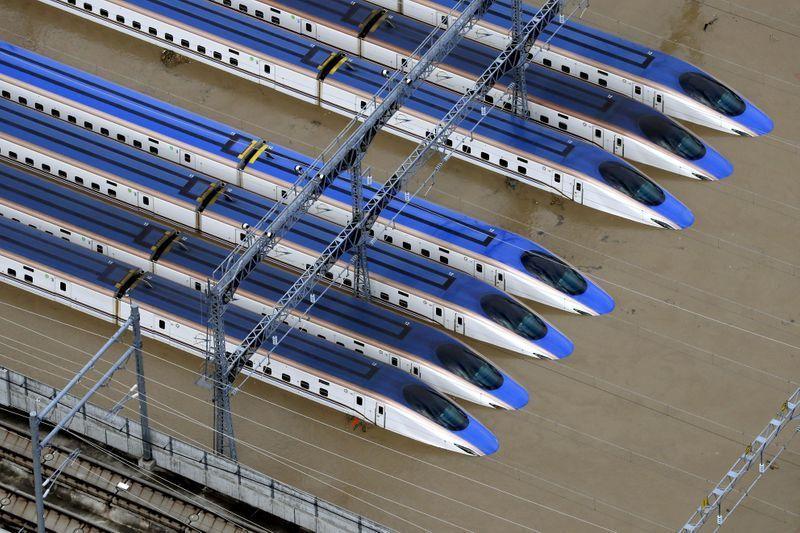A flooded Shinkansen bullet train rail yard is seen following Typhoon Hagibis in Nagano. photo:TWD
Climate Emergency declared in Japan in order to support Net Zero Goals
By Patryk Krych | The World Daily | NOVEMBER 19th 2020
On Thursday, Japanese lawmakers had declared a country-wide state of climate emergency a month after the country’s government had made commitments to a net-zero emissions timetable to follow, as a means of helping to combat climate change.
Last month, the Japanese prime minister Yoshihide Suga had made the announcement that Japan would be aiming to cut down its carbon emissions to net zero by the year 2050, much like many of the countries involved in the 2016 Paris Climate Accords.
Being the world’s third-largest economy, this is a major change to Japan. Especially when considering that the majority of its energy and power production comes from fuel imports. It is also, however, the fifth-biggest producer of carbon dioxide and therefore one of the more pressing threats to a healthy climate.
The non-binding declaration of climate emergency states that the world is currently facing a “climate crisis” and that the resulting floods, hurricanes, typhoons and forest fires will be the lead cause of “unprecedented damage.”
“I think this can send the message to the world that Japan’s parliament and government are firmly resolved to tackle this, aiming at a carbon-free society,” said Yoshihisa Furukawa, the ruling Liberal Democratic Party lawmaker and head of the secretariat of a non-partisan group of MPs who were responsible for the climate emergency declaration.
Last month, following the new net zero targets announcement, prime minister Suga said that Japan would be making a gradual transition towards using more renewable energy. He said that their primary focus would be a shift towards nuclear energy, which has become far more renewable and environmentally-friendly over the years.
Australian prime minister Scott Morrison stated that Australia certainly shares Japan’s enthusiasm for a 2050 net zero emissions pledge, but that it was far too early to commit to any specific targets. This was said to a team of Tokyo energy company executives.
“Can I just say that Australia also shares an ambition for net zero emissions,” Prime minister Morrison stated. Australia has had particular trouble with bushfires in early 2020, and fears are rising that the fires may worsen yet again. “But what we are focused on is how get there and (how) that can be achieved.”






